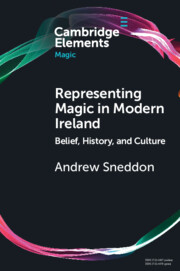Element contents
Representing Magic in Modern Ireland
Published online by Cambridge University Press: 23 April 2022
Summary
- Type
- Element
- Information
- Series: Elements in MagicOnline ISBN: 9781108954044Publisher: Cambridge University PressPrint publication: 19 May 2022
Bibliography
Primary Sources
Secondary Sources
- 8
- Cited by

